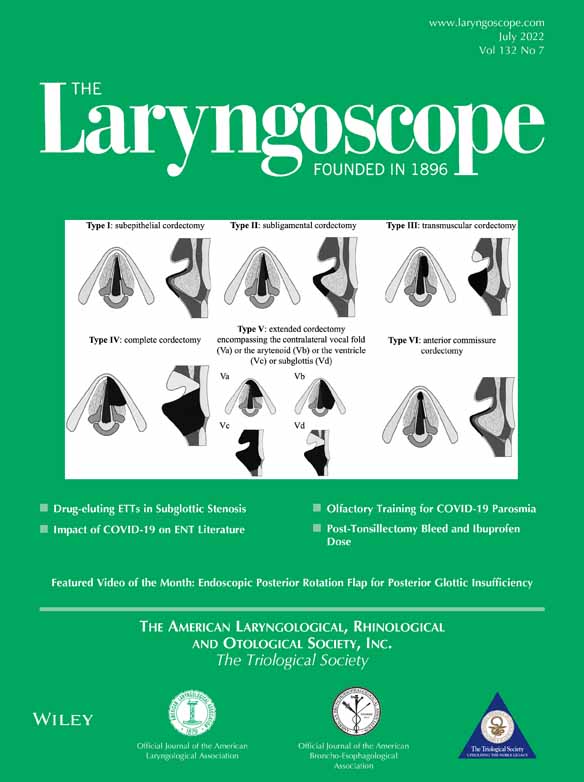Phonation Threshold Pressure Revisited: Effects of Intrinsic Laryngeal Muscle Activation
Editor's Note: This Manuscript was accepted for publication on Noverber 05, 2021.
This work was presented as a poster presentation at the Triological Society 2021 Combined Sections Virtual Meeting, January 29–30, 2021.
This study was supported by Grant No. RO1 DC011300 from the National Institutes of Health.
The authors have no other funding, financial relationships, or conflicts of interest to disclose.
Abstract
Objectives/Hypothesis
Phonation threshold pressure (Pth) is the minimum subglottic pressure required to reach phonation onset and is considered a marker for vocal efficiency and health. We investigated the effects of intrinsic laryngeal muscle (ILM) activation on Pth.
Study Design
In vivo animal study.
Methods
In an in vivo canine phonation model, laryngeal adductor muscles were activated together by stimulation of the recurrent laryngeal nerves (RLNs) and individually via stimulation of respective terminal nerve branches. Cricothyroid (CT) muscles were activated via stimulation of the superior laryngeal nerves. ILMs were activated in a graded manner at various combinations as transglottal airflow was gradually increased. Aerodynamic and glottal posture parameters were measured at phonation onset.
Results
Graded RLN stimulation decreased glottal distance and increased Pth. Thyroarytenoid (TA) muscle activation alone increased Pth. Lateral cricoarytenoid (LCA) muscle activation alone had minimal effects. However, graded TA activation as a function of LCA activation level revealed a synergistic relationship between the two muscles in increasing Pth. Effects of CT activation were dependent on adductor stimulation level: CT activation increased Pth at low RLN stimulation levels and decreased Pth at high RLN levels.
Conclusions
The effects of ILM activation on Pth were consistent with their expected effects on vocal fold stiffness and tension. TA was the primary adductor controlling Pth. While LCA alone had minimal effects on Pth, it enhanced the role of TA in controlling Pth. TA and CT have antagonistic roles in controlling Pth. These relationships should be considered in clinical efforts to improve ease of phonation and vocal efficiency.
Level of Evidence
NA, basic science Laryngoscope, 132:1427–1432, 2022




